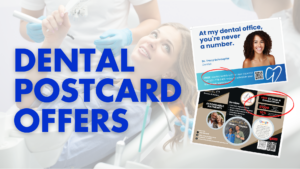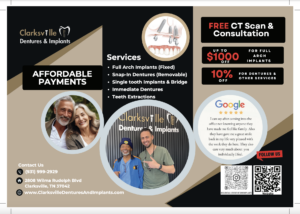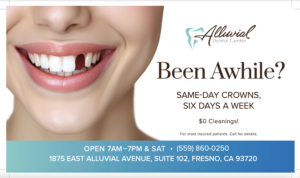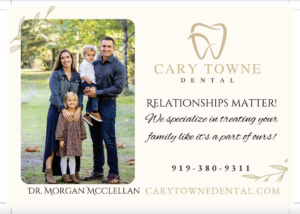
Direct mail postcards offer a highly effective way for dental practices to build connections with potential patients.
By incorporating a well-crafted, compelling offer, these postcards act as a catalyst for action, standing out in a competitive market. Whether it’s through financial incentives just as discounted services or free products or a focus on affordability and premium care, strategic offers transform casual viewers into loyal patients.
With a tangible medium that engages and informs, dental practices can use postcards with powerful offers to inspire immediate responses and foster long-term relationships.
Why Offers Work
- Immediate Value: Providing clear, tangible benefits, such as discounts, complimentary consultations, or free products, grabs attention by offering something of direct and immediate worth to the recipient. This perceived value enhances engagement and interest.
- Sense of Urgency: Limited-time promotions or exclusive offers create a sense of urgency, prompting recipients to act quickly. This tactic leverages the fear of missing out (FOMO), which can significantly increase response rates and conversions.
- Tailored Appeal: Offers designed to align with the unique needs, demographics, or financial situations of your target audience have a greater emotional impact. For instance, a discount tailored for families or a service upgrade for senior patients creates a personalized connection that drives loyalty.
- Measurable Impact: The ability to track redemption rates, coupon codes, or unique URLs tied to specific offers provides valuable insights into campaign performance. These metrics allow practices to fine-tune future campaigns for better results and higher ROI.
Types of Offers to Include
Offers don’t always need to revolve around monetary discounts; they can take various forms to appeal to different customer needs and motivations. Here are some impactful examples:
- Financial Incentives: Traditional yet effective, these include percentage discounts, dollar-off deals, or free consultations. For example, “Get $50 off your first cleaning” or “Enjoy a complimentary teeth-whitening session with a checkup.”
- Limited-Time Promotions: Time-sensitive offers like “Book by [date] to receive a free dental kit” or “Special pricing on braces—this month only!” create urgency and encourage quicker decision-making.
- Bundled Services: Combine related services to enhance value. For instance, “Schedule a cleaning and receive a fluoride treatment at no additional cost” or “Family package: Exams for two adults and two children for one flat fee.”
- Non-Monetary Offers: Emphasizing accessibility can be just as compelling. Highlight features like flexible payment plans, insurance options, or interest-free financing. These reassure patients that care is within reach, regardless of financial barriers.
Examples From Real Postcards
Below are examples of effective offers used on dental direct mail postcards. Each example highlights what works and why.
1. FREE Services + Discounts!


This postcard promotes a free CT scan and consultation, alongside significant discounts—up to $1,000 off full arch implants and 10% off dentures and other services. These offers are effective because they provide immediate, tangible value while emphasizing affordability, creating a sense of accessibility and urgency for potential patients to act.
2. FREE Product for New Patients!


This postcard offers a free electric toothbrush for new patients who schedule their first dental appointment. Free gifts like this are highly appealing because they create an immediate sense of value and excitement. By pairing this enticing incentive with a warm, patient-focused message, it effectively encourages potential patients to take action while fostering positive first impressions.
3. $0 Cleanings!


This postcard highlights a compelling offer of $0 cleanings for insured patients and low-cost coverage for uninsured individuals. These features appeal directly to budget-conscious patients while addressing common barriers to dental care. The inclusion of same-day crowns and extended hours further reinforces the practice’s convenience, making it an attractive choice for those with busy schedules or immediate needs.
4. Family-Centric Care


This postcard stands out by offering no monetary discounts or promotions, instead focusing on the promise of top-quality, comprehensive family care. Its family-centric messaging and emphasis on building relationships resonate with patients seeking a welcoming and caring dental practice. By showcasing patient testimonials and a compassionate team, it establishes trust and credibility, making it an effective tool to attract families who value a personal and long-term approach to dental care.
5. No Insurance, No Worries!


This postcard addresses a common barrier to dental care by offering an in-house membership plan for individuals without dental insurance. By promoting an easy, three-step process to enroll, it eliminates the stress and complexity often associated with dental coverage. This inclusive approach ensures affordable access to essential procedures, making dental care more accessible and appealing to uninsured patients while building trust and loyalty.
How to Create the Best Offer for Your Dental Postcard
Selecting the right offer for your dental postcard is critical to capturing the attention of potential patients and driving responses. The best offer not only highlights the unique value your practice provides but also aligns with your target audience’s needs and pain points.
Here’s a step-by-step guide to help you choose the perfect offer:
1. Understand Your Target Audience
Your offer should directly appeal to and resonate with the demographic you want to attract. Consider these factors:
- Families: Highlight family-friendly deals like free pediatric exams or discounts for multiple family members.
- Budget-Conscious Patients: Offers like “$0 cleanings for insured patients” or low-cost membership plans for uninsured individuals are ideal.
- Cosmetic Dentistry Seekers: Showcase free consultations or discounted whitening services to entice patients looking to improve their smiles.
2. Align the Offer with Your Practice’s Strengths
Identify what your practice does best and use that to create an offer that emphasizes your unique value. For instance:
- Advanced Technology: If you specialize in same-day crowns, offer a discount on this service or a free consultation.
- Patient-Centric Care: Promote a benefit like a free electric toothbrush or a care package for new patients to demonstrate your commitment to their well-being.
3. Provide Immediate and Tangible Value
Offers that give patients something they can immediately appreciate tend to perform better. Examples include:
- Discounts (e.g., $500 off implants)
- Free services (e.g., free exams or x-rays)
- Gifts (e.g., electric toothbrushes for new patients)
4. Use Limited-Time Offers to Drive Urgency
Incorporate deadlines to create urgency and prompt immediate action. Examples include:
- “Book your appointment by [date] and receive $100 off your next cleaning.”
- “Offer valid for the first 25 new patients only.”
Time-sensitive promotions help overcome procrastination and spur quick responses.
5. Keep It Simple and Clear
A strong offer is easy to understand and actionable. Avoid overwhelming potential patients with too much fine print or complicated terms. For instance:
- Use straightforward language like “Free Exam for New Patients” rather than “Complimentary Exam Subject to Conditions.”
- Ensure the call-to-action (CTA) is clear and directs the reader to the next step, such as “Call us today to schedule your free consultation.”
6. Test and Measure Your Offers
If you’re unsure which offer will perform best, consider A/B testing two versions of your postcards. Track redemption rates to see which generates more responses, then focus on the winning offer for future campaigns.
7. Evaluate ROI
Choose an offer that balances patient acquisition with profitability. A large discount might attract attention but could erode your margins. Conversely, smaller but valuable incentives, like free consultations, can attract interest while minimizing costs.

